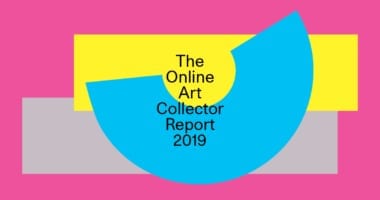About
David and Pamela Hornik, a Palo Alto–based couple, shares why placing works in institutions is a natural part of their collecting process.
Location
Palo Alto
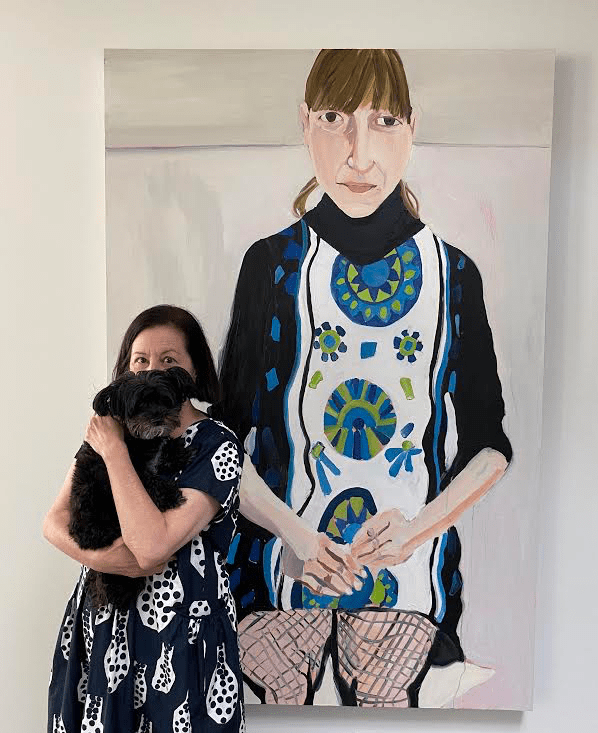
Installation view, Chantal Joffe, Sally in Fishnets, 2013. Image courtesy of Pamela and David Hornik.
“We’ve always been avid museumgoers,” says Pamela Hornik. “The first art on our walls was made by our kids—we had a rotating gallery. It wasn’t until the kids got older and I started volunteering at the Cantor Arts Center—Stanford’s art museum—that our obsession with art really got going.”
Husband and wife David and Pamela Hornik have built a collection of emerging and established artists that reflects not just their passion for supporting artists, but also a desire to share their diverse and inclusive collection with the world.
“The more art we saw, the more excited we got,” David shares. “Our weekends became art adventures with four kids in tow—open studios, museum tours, gallery visits. We loved getting to know artists and visiting their studios. And we loved supporting these amazingly creative people who had committed their lives to making art.”
Based in Palo Alto, California, David is a general partner at Lobby Capital and Pamela serves on the Director’s Advisory Board of Cantor Arts Center, Management Committee of the Anderson Collection at Stanford University, and the Time In Children’s Arts Initiative. We spoke with them about their collection and how they built long-lasting relationships with artists and gallerists online.
We loved getting to know artists and visiting their studios. And we loved supporting these amazingly creative people who had committed their lives to making art.
David Hornik
On the pathos of their collection
David and Pamela strive to create a collection that reflects the complex, diverse, and often challenging world today. Their acquisitions reflect their passion not just for the art itself, but for the personal, human stories each piece tells.
“First and foremost, we buy art we love,” says David. “We don’t buy art as an investment. I kind of hate that. We buy art because it speaks to us—it makes us happy, or makes us think, or it is unimaginably beautiful.”
Their collection can be described as one chosen with equity and inclusion in mind. “David will argue that our collection isn’t mission-driven, it simply reflects the world we would like to live in,” says Pamela.
“We are drawn to work that reflects the personhood of the artists and their subjects,” David reflects. “One of Pamela’s favorite artists is Chantal Joffe. She paints these very raw images of women—often herself—that are imperfect but totally captivating in their realness.”
In the couple’s Palo Alto home, they display a Joffe painting, Topless Self Portrait in Reading Glasses (2014), in their stairway looking down on two smiling sculptures by Yue Minjun. “They’re very different pieces, but both really reflect the artists who made them and how they see the world,” David says.
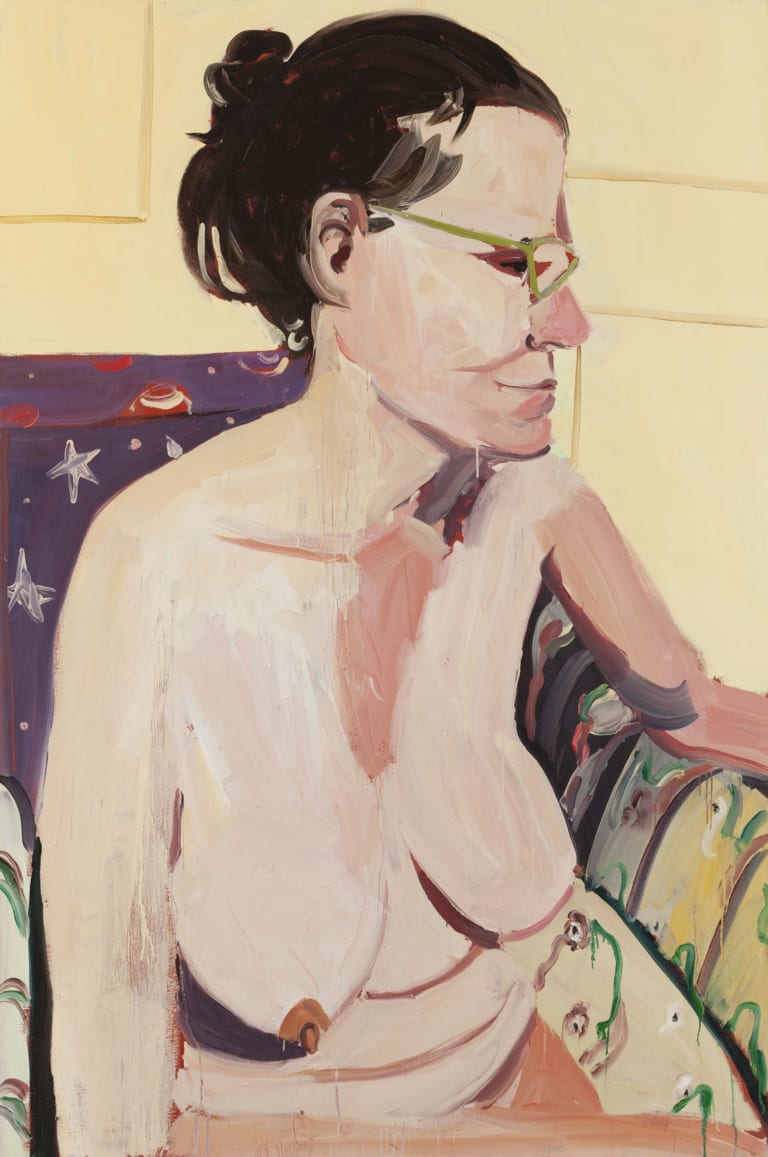
Chantal Joffe, Topless Self-Portrait in Reading Glasses, 2014. Oil on canvas, 72 1/8 x 48 1/4 x 1 3/8 inches / 183.2 x 122.6 x 3.5 centimeters. © 2021 Chantal Joffe. Photography: Brian Buckley / Cheim & Read, New York.
On the importance of sharing their works with institutions
The Joffe self-portrait is, in fact, a promised gift to the Cantor Arts Center. “We’ve had a really close relationship with the museum for the last dozen years that I’ve been volunteering there,” Pamela shares. “We’ve given a number of pieces to the Cantor over the years, including photos by Carrie Mae Weems and Wesaam Al-Badry, prints by Mickalene Thomas, and paintings by Jordan Casteel and John Sonsini. A diverse group of students visit the Cantor, and I always love it when students can see themselves reflected in the art hanging on the walls.”
For David and Pamela, making works accessible to a larger audience is a natural part of their collecting process. “Sometimes we see work that is so powerful we have to buy it, but hope it will hang in a museum someday,” says David.
The couple currently have several works on loan to the ICA San Jose, including an Ebony G. Patterson portrait from the artist’s “Gangstas for Life” series, a portrait by Conrad Egyir set to appear in the artist’s upcoming solo exhibition in October, and Catherine Opie’s Untitled #4, Richmond, Virginia (monument/monumental) (2020). Opie’s photograph of the graffitied monument of Robert E. Lee in Richmond, Virginia, is set to remain on view at the ICA San Jose until 2022, when it will move to the Addison Gallery of American Art in Andover, Massachusetts, as part of the institution’s “Past is Prologue: Contemporary Art and History” exhibition.
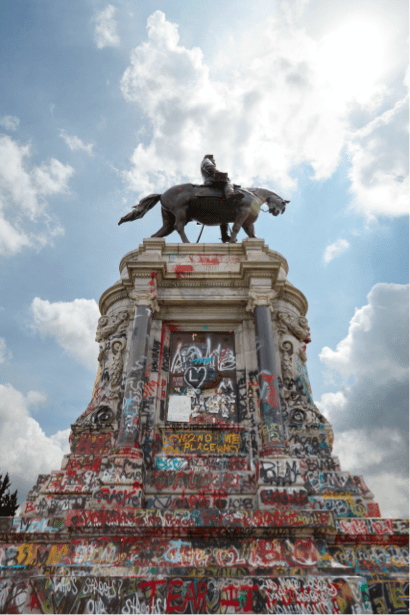
Catherine Opie, Untitled #4 (monument/monumental), 2020. Courtesy of Pamela and David Hornik. Currently on view at ICA San Jose.
“Oftentimes the art ecosystem is seen as fancy art openings and insane auctions,” says Pamela. “At times I struggle to find my place in that world. But we love to support artists and exhibitions that can have an impact. That’s where we are most comfortable.”
One of the couple’s acquisitions, a portrait of Lottie Green Varner from Lava Thomas’s “Mugshot Portraits: Women of the Montgomery Bus Boycott” series, has been on view in a traveling exhibition of the 2019 Outwin Boochever Portrait Competition finalists. Thomas’s series commemorates the unsung heroines of the civil rights movement, and the piece in David and Pamela’s collection will soon head to Montgomery, Alabama, for an exhibition of Thomas’s works. “We’re thrilled to support the exhibition that brings these important portraits back to Montgomery,” says Pamela.
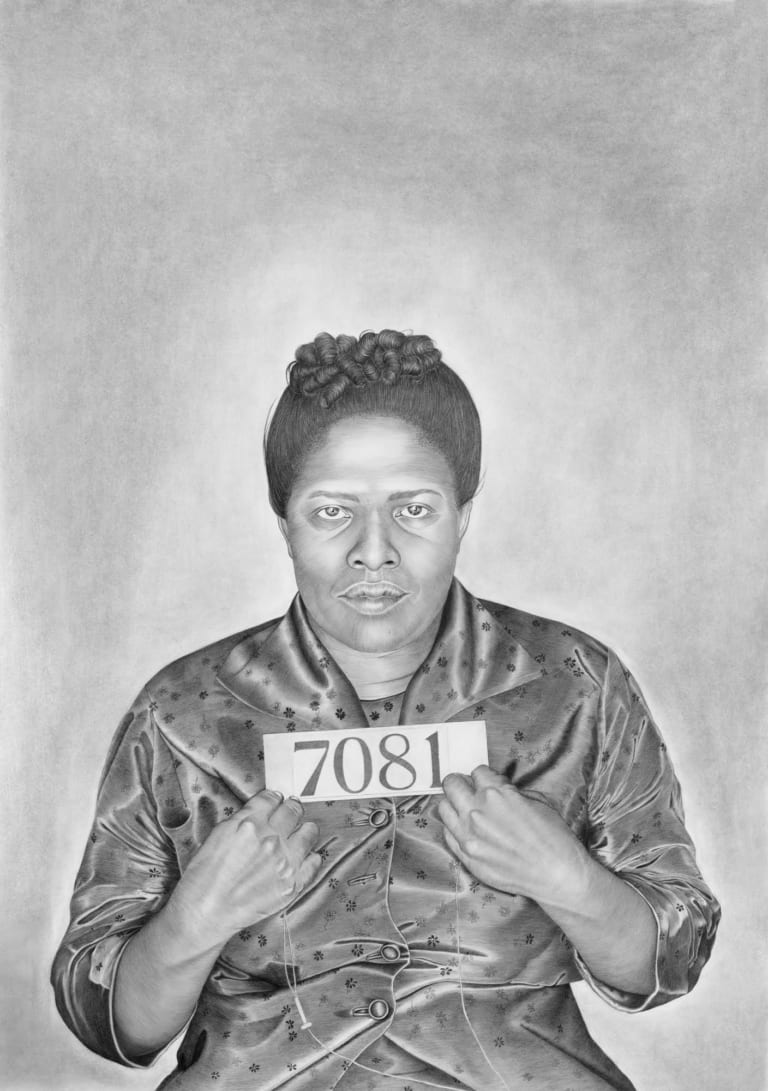
©Lava Thomas, courtesy of Rena Bransten Gallery, San Francisco.
She continues, “Similarly, we’ve been big fans of Maia Cruz Palileo for some time. We were excited to see her in Artsy’s ‘16 Rising Artists of the Asian Diaspora in the United States.’ While we only own one small portrait of hers, we are happy to be supporting her upcoming exhibition at CCA Wattis at San Francisco. We agree—she’s a rising star.”
Oftentimes the art ecosystem is seen as fancy art openings and insane auctions. At times I struggle to find my place in that world. But we love to support artists and exhibitions that can have an impact. That’s where we are most comfortable.
Pamela Hornik
On living with and acquiring art during the pandemic
“One of the things that kept me sane during the pandemic was acquiring great art of dogs—not by dogs,” Pamela tells us. “As we couldn’t visit galleries, I spent a lot of time on Instagram and Artsy. In the end, I acquired no less than 30 artworks of dogs by emerging and established artists: paintings, photos, collages. It is really fun to see John Hiltunen from Creative Growth alongside Warhol Polaroids, an Elizabeth Peyton print, and a Hockney iPad drawing.”
Installation view of the couple’s collection. Video courtesy of Hung Art Installation & Design.
“We didn’t only buy art of dogs during the pandemic, thankfully,” David quips. “Pamela is an obsessive Instagram user. She’s connected to a truly astounding group of artists, gallerists, and curators on Instagram. She’s constantly discovering fantastic new artists online. I’d say we bought the work of more emerging artists during lockdown than ever before.”
David and Pamela are not alone when it comes to finding new artists through digital channels. The Art Collecting 2021: An Artsy Report found that online art marketplaces were the most popular place to discover art and artists online among collectors.
“It is a little bit ironic that one of my favorite new pieces is a self-portrait by Jake Sheiner called Reading Negative Comments About My Paintings on Instagram,” David says. “Jake’s piece was part of a group show by Taymour Grahne in London. We’ve never met Taymour but he has an incredible program. We’ve bought a bunch of work from him in the last year and can’t wait to meet him when we can finally get back to London.”
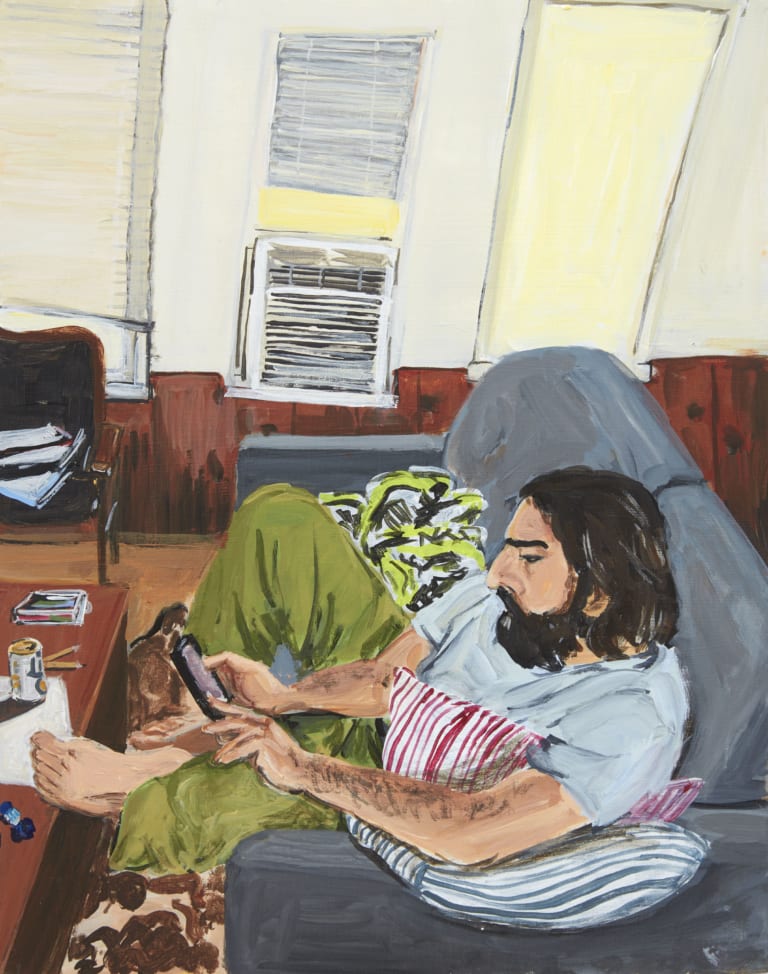
Jake Sheiner, Reading Negative Comments About My Paintings On Instagram, 2020. Courtesy of Taymour Grahne Projects and Pamela and David Hornik.
On building meaningful relationships online
“Artsy is the primary way I find new artists online,” says David.
“The collecting process we’ve developed is that I’m on Instagram, I see an artist I send the information over to David, he looks them up on Artsy and sees which gallery’s representing them, and then we contact the gallery,” Pamela explains. “That’s what we’ve been doing for years.”
Pamela deftly navigates the digital art world with the intent to not only discover and collect, but to also form long-lasting relationships. “I don’t just discover art on Instagram,” she says. “I discover wonderful people and build real relationships. David thinks it’s crazy that I make friends on Instagram, but I’ve gotten to know a lot of people through their posts and mine.”
“I saw a post on Argo and Artemis—it’s a dog community—of an incredible embroidered piece by LJ Roberts,” Pamela recalls. “I messaged LJ to tell them I loved the piece, and that started a conversation that has turned into a friendship.” Pamela and LJ went on to meet in person—accompanied by their beloved dogs—at the Highline Hotel in Chelsea. The couple is now supporting Roberts’s upcoming exhibition at Pioneer Works in Brooklyn this fall.

LJ Roberts, Portraits 2011, 2011. This is the embroidered portrait that inspired Pamela’s first conversation with the artist.
Artsy is the primary way I find new artists online.
David Hornik
On artists they’re looking to support next
Which emerging artists will the Horniks be supporting in 2021 and beyond? “Jiab Prachakul,” says Pamela. “Her work is incredible. She’s a self-taught artist who won the National Portrait Gallery’s BP Portrait Awards in 2020.” Prachakul had her first U.S. solo exhibition, “Jiab Prachakul: 14 Years,” in February 2021 with Friends Indeed Gallery. The show explored the nuances of Asian diasporic representation through a series of intimate portraits.
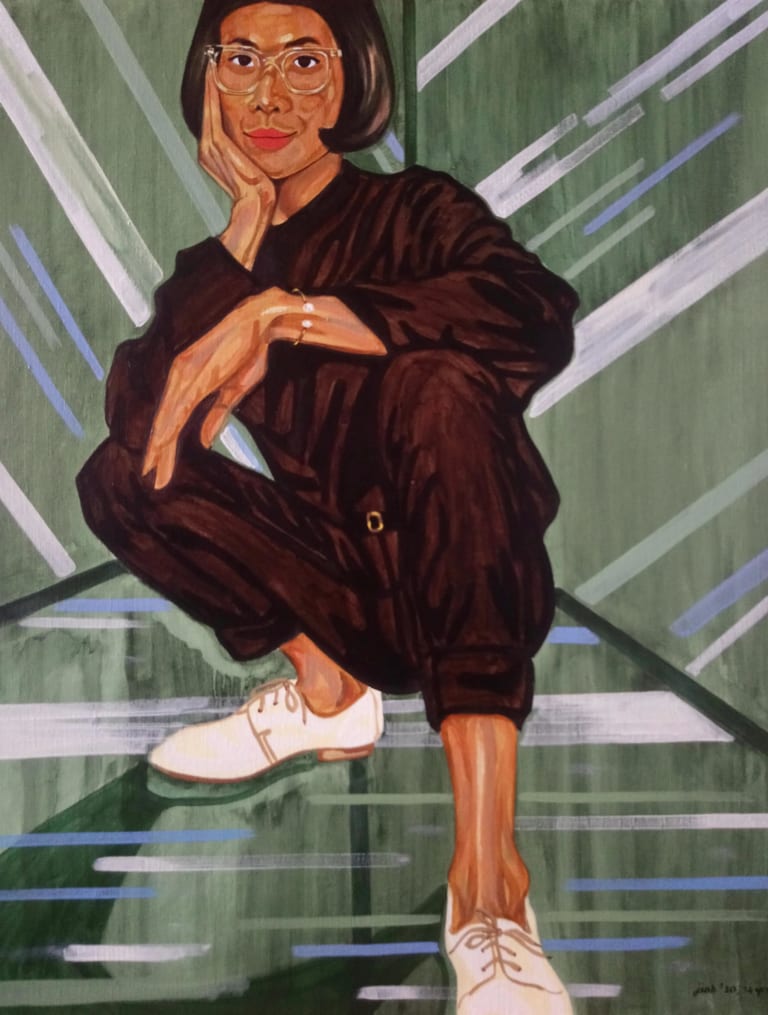
Jiab Prachakul, 14 Years (Self-portrait), 2020. Courtesy of Friends Indeed Gallery and David and Pamela Hornik.
“It was one of the few gallery shows we attended during the entire lockdown,” Pamela recalls. “It was worth it. Keep an eye out for the upcoming catalogue of her work, which we are thrilled to be supporting through our H6 Arts Fund.”
“The arts fund isn’t anything too grand,” David says. “It is just an opportunity to support exhibitions and artists we love. I’m a venture capitalist who invests in amazing entrepreneurs when they are just getting started. Occasionally those little companies become big exciting companies, which makes it possible to give back. It is a very lucky position to be in.”

